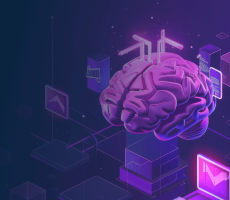As the digital world continues to evolve, AI-powered technologies are becoming increasingly intertwined with our daily lives. The latest trend among AI platform providers is AI-powered screen monitoring—a new frontier where real-time, human data-driven insights are the prized asset. It’s as if these tech giants have discovered the digital equivalent of coffee, and everyone wants a sip of that real-time brew.
Leading the charge in this AI revolution are companies like Claude AI-Powered Screen Monitoring, Microsoft Recall, Apple Ferret-UI, Google Pixel Screenshots, and OpenAI’s ChatGPT. These platforms are pushing the boundaries of what’s possible with Vision Language Models (VLMs), which are capable of learning from both images and text simultaneously. Whether it’s visual question answering or executing context-driven actions, these models are rapidly becoming the AI copilots of the future.
But with these advancements comes a critical question: What about privacy? As these AI models become more embedded in our devices—Phi Silica, AFM-on-device, and Gemini Nano are already making strides on mobile and desktop screens—the balance between convenience and privacy becomes ever more delicate. The seamless integration of AI into our daily routines may feel like magic, but it also prompts concerns about who truly controls our data.
When it comes to AI-powered screen monitoring, the perspectives of the AI platforms themselves offer valuable insights. Claude, for instance, suggests that users should be cautious about their data and privacy when using AI services, particularly those that are cloud-based. On the other hand, ChatGPT advocates for exploring local AI solutions—AI that processes data on your own devices, not in the cloud. The key message is clear: Make sure you own your AI. Cloud-based AI services, while powerful, ultimately serve the interests of the companies that control them, not the individual users.
This brings us to a larger conversation about the convergence of AI and personalization—a topic that industry leaders like Mark Zuckerberg and Jensen Huang recently discussed at SIGGRAPH 2024. Their dialogue highlighted a shared vision for AI as a deeply personal and integrated part of our lives, capable of anticipating our needs and delivering tailored experiences. However, realizing this vision requires a significant paradigm shift—from centralized, closed-source AI models to decentralized, personalized intelligent cores.
This shift is crucial for two reasons. First, it prioritizes individual and organizational data ownership and control, fostering a sense of digital sovereignty. By owning their AI, individuals can mitigate privacy risks and ensure their data remains in their own hands. Second, a decentralized AI ecosystem could spur innovation, as diverse models emerge to cater to specific needs and preferences. Instead of a one-size-fits-all approach, AI could become as unique as the people and organizations that use it.
As technology continues to advance, the fusion of AI and personalization will redefine how we live and work. The journey toward a future where individuals and organizations hold the reins of their AI destiny is already underway. This aligns with a growing desire for autonomy and control over personal information—a trend that is particularly evident in the rise of companies like nexgAI.
At the forefront of this revolution, nexgAI provides platforms that empower organizations to create their own decision intelligence engines. By democratizing AI development, nexgAI accelerates the path toward a future where AI is truly personalized and aligned with individual and organizational goals—not just those of a company in the cloud.
The future of AI is not just about smarter technology; it’s about smarter, more autonomous users. By embracing personalized AI, we are not only enhancing our digital experiences but also reclaiming control over our data and our destinies. In this new era, the power of AI will be aligned not with the corporations that create it, but with the individuals and organizations that use it.







